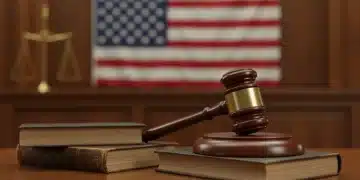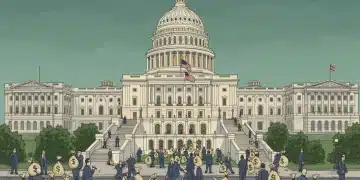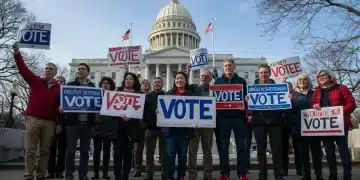Decoding Executive Orders: Future Federal Regulations Explained
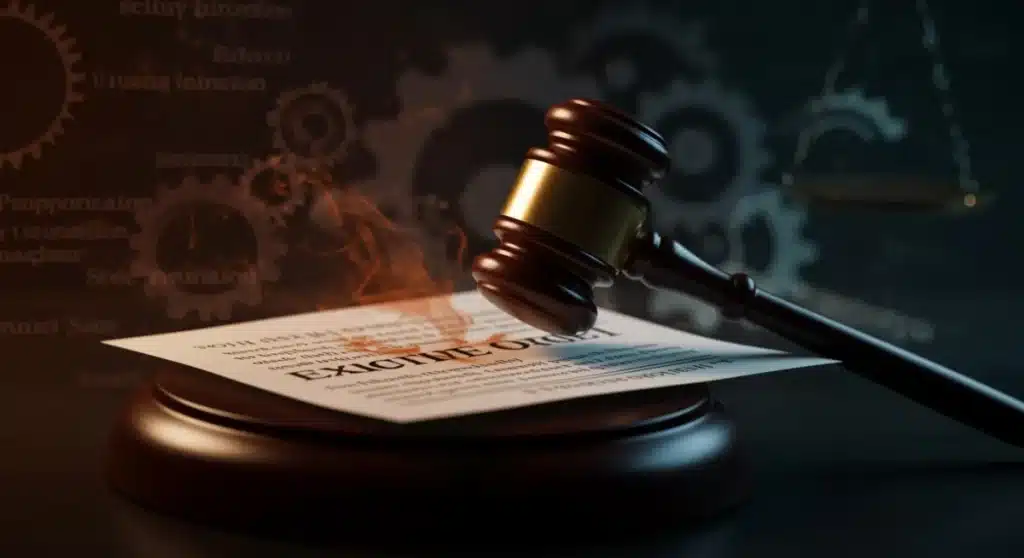
Executive orders are powerful tools presidents use to direct federal agencies, fundamentally shaping the landscape of future federal regulations and impacting various sectors across the United States.
Understanding the intricate world of federal policy can often feel like navigating a labyrinth, especially when presidential actions become pivotal. Today, we delve into executive orders regulations, examining their profound implications for the future of federal oversight and governance. These directives, issued directly by the President of the United States, bypass the full legislative process, yet hold significant sway over how federal agencies operate and enforce laws. What do these recent executive orders truly signify for the regulatory environment, and how might they shape our lives in the coming years?
The Power and Purpose of Executive Orders
Executive orders are a critical instrument in the presidential toolkit, allowing the President to manage the operations of the federal government. Rooted in the constitutional authority granted to the executive branch, these orders carry the weight of law, guiding federal agencies in implementing existing statutes or setting new policies within the executive’s purview. While they don’t create new legislation in the same way Congress does, their impact on the regulatory landscape is undeniable and often immediate.
The historical use of executive orders dates back to the very first presidents, evolving over time to address issues ranging from administrative organization to significant policy shifts. Their legitimacy typically rests on existing statutory authority or the President’s constitutional powers as commander-in-chief and chief executive. However, this power is not absolute and is often subject to judicial review and congressional oversight, leading to potential challenges and reversals.
Constitutional Basis and Limitations
The U.S. Constitution does not explicitly mention executive orders, but their legality is generally understood to derive from Article II, which vests “executive power” in the President and obliges them to “take Care that the Laws be faithfully executed.” This broad grant of power allows presidents to issue directives that clarify or further existing laws without requiring direct congressional approval. Nevertheless, the Supreme Court has, on occasion, curtailed presidential authority when executive orders have been deemed to overstep constitutional boundaries or encroach upon legislative powers.
- Article II, Section 1: Grants “executive power” to the President.
- Article II, Section 3: Requires the President to “take Care that the Laws be faithfully executed.”
- Judicial Review: Executive orders can be challenged in federal courts, potentially leading to their invalidation.
- Congressional Oversight: Congress can pass legislation to override or modify the effects of an executive order, though this often requires overcoming a presidential veto.
Understanding these foundational aspects is crucial for appreciating the scope and limitations of presidential actions. While a powerful tool, executive orders operate within a complex system of checks and balances, ensuring no single branch wields unchecked authority over the nation’s regulatory framework. The ongoing interplay between the executive, legislative, and judicial branches defines the ultimate fate and impact of these directives.
In essence, executive orders serve as a vital mechanism for presidential leadership, enabling rapid responses to pressing issues and shaping the direction of federal policy without the often-lengthy legislative process. However, their reliance on existing legal frameworks and susceptibility to challenge underscores the delicate balance of power inherent in the American political system.
Recent Executive Orders: A Snapshot of Policy Shifts
The current administration has issued a series of executive orders designed to address a wide array of national priorities, from environmental protection to economic recovery and social justice. These directives often reflect the President’s policy agenda and aim to implement significant changes without necessitating new legislation. Each order, while seemingly distinct, contributes to a broader vision for federal governance and regulatory enforcement.
Analyzing these recent orders reveals common themes and strategic objectives. Many focus on reversing previous administration policies, signaling a shift in ideological direction. Others seek to bolster specific sectors or address emergent challenges that require immediate federal action. The collective impact of these orders is to redefine the operational parameters for federal agencies, influencing everything from procurement practices to public health guidelines.
Key Areas of Focus
The recent wave of executive orders has touched upon several critical policy domains. For instance, climate change and environmental protection have been prominent, with orders aimed at rejoining international agreements, setting ambitious emissions targets, and promoting renewable energy. These actions directly influence the regulatory responsibilities of agencies like the Environmental Protection Agency (EPA) and the Department of Energy.
- Climate Change: Reversing withdrawals from international accords, setting new domestic emission standards, and investing in green infrastructure.
- Economic Recovery: Directing federal agencies to prioritize American-made goods, support small businesses, and address supply chain vulnerabilities.
- Social Justice: Promoting equity in federal programs, addressing systemic discrimination, and reforming aspects of the criminal justice system.
- Healthcare: Expanding access to affordable healthcare, protecting pre-existing conditions, and strengthening the Affordable Care Act.
These directives are not merely symbolic; they translate into concrete actions that federal agencies must undertake. For instance, an executive order on climate change might compel the EPA to revise emissions standards for power plants, or direct the Department of the Interior to halt new oil and gas leases on federal lands. The ripple effects of such changes can be felt across industries and communities, influencing investment decisions, job creation, and public health outcomes.
The immediate effect of these orders is to set a new course for federal agencies, requiring them to align their operations and regulatory activities with the President’s agenda. However, the long-term impact depends on various factors, including the stability of the political landscape, potential legal challenges, and the capacity of agencies to implement the directives effectively. This ongoing dynamic highlights the fluid nature of regulatory policy shaped by executive action.
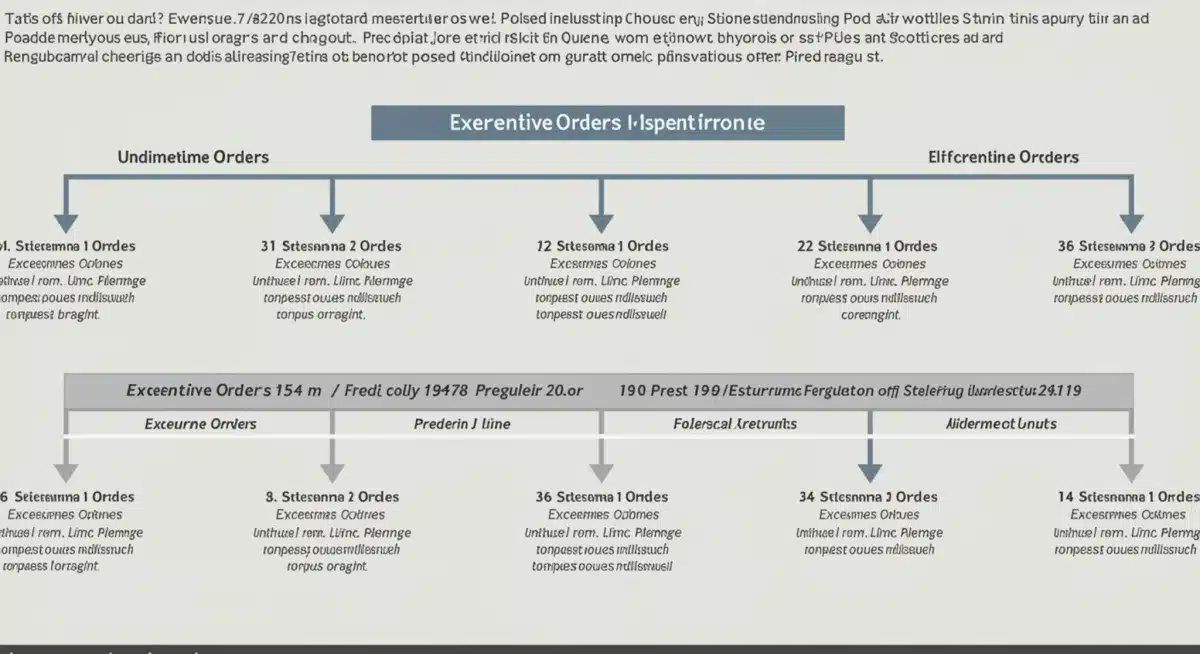
Impact on Federal Agencies and Regulatory Enforcement
Executive orders serve as direct instructions to federal agencies, compelling them to modify existing regulations, create new ones, or shift their enforcement priorities. This direct line of command means that agencies must quickly adapt their operational frameworks and policy implementations to comply with the President’s directives. The scale of this impact can vary significantly, from minor administrative adjustments to wholesale overhauls of regulatory mandates.
When an executive order is issued, agencies like the Department of Labor, the Department of Education, or the Department of Health and Human Services must review their current practices and identify areas requiring alignment. This often involves reinterpreting existing statutes, developing new guidance documents, or initiating formal rulemaking processes. The speed and effectiveness with which agencies respond can determine the practical success of an executive order’s objectives.
Operational Changes and Policy Shifts
The immediate consequence of many executive orders is a directive for agencies to either strengthen or relax regulatory enforcement in specific areas. For example, an order focused on environmental protection might instruct the EPA to increase inspections, impose stricter penalties for violations, or expedite the review of environmental impact statements for new projects. Conversely, an order aimed at deregulation might direct agencies to streamline permitting processes or reduce compliance burdens on businesses.
- Increased Enforcement: Agencies may be directed to allocate more resources to monitoring compliance and prosecuting violations.
- Regulatory Review: Executive orders often mandate a review of existing regulations to identify those that are outdated, burdensome, or inconsistent with current policy goals.
- New Rulemaking: Agencies may be tasked with developing entirely new rules to implement the policy objectives outlined in an executive order.
- Resource Allocation: Directives can influence how federal funds are allocated across various agency programs and initiatives.
The shift in regulatory priorities can have profound implications for regulated industries and the public. Businesses may face new compliance requirements or, conversely, enjoy a reduction in administrative hurdles. Citizens might experience changes in the quality of environmental protection, consumer safeguards, or access to social services. The administrative burden on agencies can also be substantial, as they navigate the complexities of implementing new directives while maintaining their core functions.
Ultimately, the effectiveness of executive orders in shaping the regulatory landscape hinges on the capacity and willingness of federal agencies to translate presidential directives into tangible actions. This process is often iterative and can involve extensive stakeholder engagement, legal challenges, and ongoing adjustments to ensure that the spirit of the executive order is faithfully executed.
Economic and Social Repercussions of Executive Orders
The issuance of executive orders reverberates throughout the economy and society, creating both opportunities and challenges for various sectors. These presidential directives, by altering the regulatory environment, can influence market dynamics, investment patterns, job creation, and the distribution of social benefits. Understanding these broad repercussions is essential for grasping the full scope of their impact.
Economically, executive orders can either stimulate or constrain growth depending on their focus. For instance, orders promoting renewable energy might boost investment in green technologies and create jobs in that sector, while those imposing stricter environmental regulations on traditional industries could lead to increased operational costs and potential job losses in those areas. Socially, directives on healthcare access or civil rights can significantly alter quality of life and equity across different demographics.
Sector-Specific Effects
Different sectors experience the impact of executive orders in unique ways. The energy sector, for example, is highly sensitive to changes in environmental regulations or policies related to fossil fuels and renewable energy sources. An order halting new drilling permits could significantly affect oil and gas companies, while one promoting electric vehicle infrastructure would benefit automotive manufacturers and related industries.
- Energy Sector: Directives on emissions, fossil fuel extraction, and renewable energy incentives can lead to significant shifts in investment and production.
- Healthcare Industry: Orders related to drug pricing, insurance coverage, or public health initiatives can alter business models and patient access.
- Manufacturing: Policies promoting domestic production or imposing tariffs can affect supply chains, production costs, and international trade relations.
- Technology Sector: Orders concerning data privacy, cybersecurity, or antitrust enforcement can shape innovation and market competition.
Beyond direct economic impacts, executive orders can also have profound social consequences. Orders designed to promote equity and reduce discrimination can lead to greater access to opportunities for marginalized communities, while those affecting immigration policies can reshape demographic trends and social services. The interplay between economic and social factors often creates complex feedback loops, where changes in one area inevitably influence others.
For individuals, these policy shifts can mean changes in consumer prices, employment opportunities, and access to essential services. For businesses, they can necessitate strategic adjustments, compliance investments, or the pursuit of new market ventures. The ongoing assessment of these economic and social repercussions is crucial for policymakers and the public alike to understand the real-world implications of presidential actions.
Challenges and Controversies Surrounding Executive Orders
Despite their utility in governing, executive orders are frequently at the center of political debate and legal challenges. Their ability to bypass the full legislative process raises questions about democratic accountability and the balance of power. This often leads to significant controversy, especially when orders touch upon highly contentious policy issues or are perceived as overreaching presidential authority.
One of the primary challenges stems from the perception that executive orders can be used to circumvent congressional will, particularly when a president faces a divided Congress. Critics argue that this undermines the legislative process and can lead to policy swings with each change of administration, creating instability and uncertainty in the regulatory environment. This constant back-and-forth can make long-term planning difficult for businesses and state governments.
Legal and Political Opposition
Executive orders are routinely challenged in federal courts, with plaintiffs arguing that they exceed presidential authority, violate constitutional principles, or conflict with existing statutes. These legal battles can delay or entirely block the implementation of orders, creating uncertainty and requiring significant legal resources from the government. The Supreme Court often plays a crucial role in defining the boundaries of presidential power in this regard.
- Judicial Review: Courts, up to the Supreme Court, can invalidate executive orders found to be unconstitutional or beyond statutory authority.
- Congressional Pushback: Congress can attempt to overturn executive orders through legislation, defund their implementation, or hold oversight hearings.
- State Challenges: State governments or attorneys general may file lawsuits, arguing that federal executive orders infringe upon state sovereignty or impose undue burdens.
- Public Opposition: Significant public outcry or organized protests can exert political pressure, sometimes leading to the modification or withdrawal of orders.
The political opposition to executive orders is often fierce, with opposing parties and advocacy groups mobilizing to challenge their legitimacy and impact. This can manifest in public campaigns, lobbying efforts, and organized resistance at both federal and state levels. The high-stakes nature of these disputes highlights the significant power wielded by executive orders and the intense scrutiny they attract.
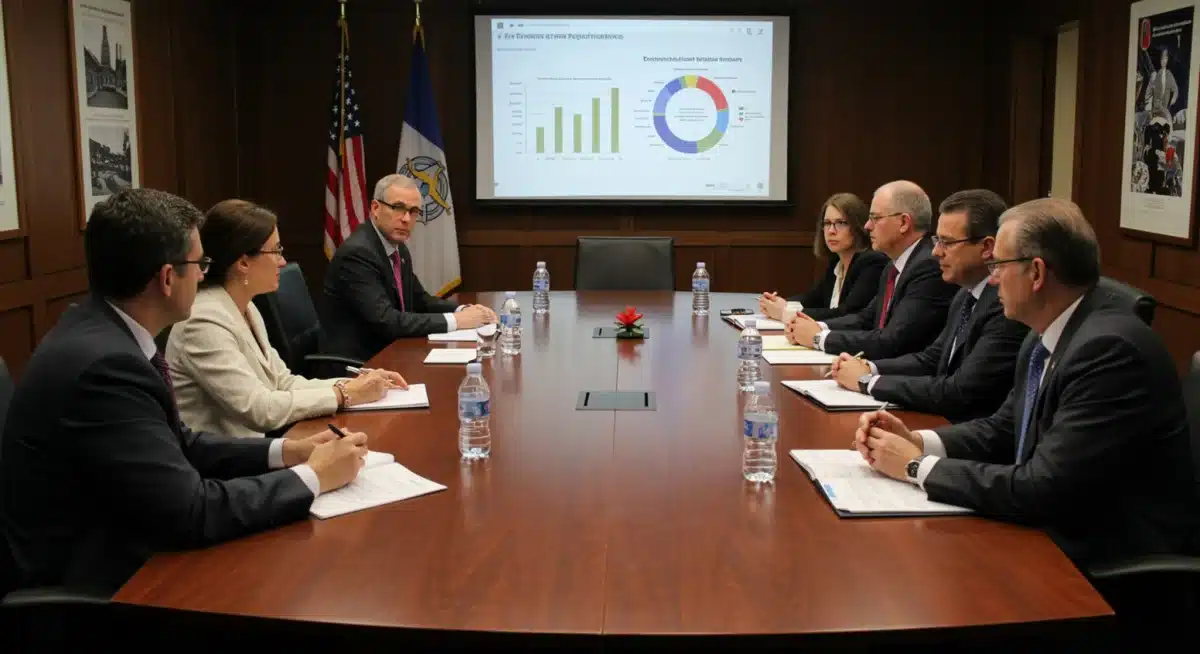
Ultimately, the controversies surrounding executive orders underscore the delicate balance of power in the American system of government. While they offer a swift means for presidential action, they are also subject to rigorous checks and balances, ensuring that no single branch can act without accountability. This dynamic tension shapes the ongoing evolution of federal regulations and policy.
The Future Landscape of Federal Regulations
Looking ahead, the role of executive orders in shaping federal regulations is likely to remain significant, influenced by political dynamics, societal needs, and technological advancements. The interplay between presidential power, congressional action, and judicial review will continue to define the boundaries and effectiveness of these directives. Predicting the exact trajectory is challenging, but several trends suggest potential directions for future regulatory frameworks.
One key factor will be the increasing complexity of global challenges, such as climate change, pandemics, and cybersecurity. These issues often require rapid, coordinated federal responses that executive orders can facilitate more quickly than traditional legislative processes. Consequently, we may see presidents increasingly relying on these tools to address urgent national and international concerns.
Emerging Trends and Potential Shifts
Technological innovation is another area poised for significant regulatory impact from executive orders. As artificial intelligence, biotechnology, and digital currencies evolve, presidents may issue directives to establish ethical guidelines, promote research, or mitigate potential risks. This proactive approach could help the government keep pace with rapidly changing technological landscapes.
- Technological Governance: Executive orders may increasingly address AI ethics, data privacy, and cybersecurity standards.
- Global Cooperation: Directives could focus on re-establishing international partnerships and addressing transnational issues like climate and public health.
- Economic Resilience: Future orders might prioritize supply chain security, critical infrastructure protection, and domestic manufacturing incentives.
- Social Equity: Continued emphasis on addressing systemic inequalities and promoting inclusive policies across federal programs.
The pendulum swing of regulatory policy with each new administration is also a likely constant. Executive orders from one president can be swiftly reversed or modified by the next, leading to periods of significant regulatory flux. This dynamic underscores the importance of understanding the political context in which these orders are issued and their potential for swift alteration.
Furthermore, the judiciary will continue to play a vital role in defining the limits of executive power. Court rulings on the constitutionality and scope of executive orders will provide crucial precedents, guiding future presidential actions and shaping the interpretive framework for federal agencies. This ongoing legal dialogue ensures that executive authority remains within its prescribed bounds.
The future of federal regulations, heavily influenced by executive orders, will thus be a landscape of continuous adaptation and negotiation, reflecting both the immediate priorities of the executive branch and the enduring principles of American constitutional governance.
Navigating the Regulatory Maze: Implications for Businesses and Citizens
For businesses and citizens alike, understanding the implications of executive orders on federal regulations is not just an academic exercise; it’s a practical necessity. These directives can directly influence daily operations, financial planning, and personal freedoms. Staying informed and prepared is crucial for navigating the evolving regulatory environment.
Businesses, particularly those operating in heavily regulated sectors like energy, finance, or healthcare, must closely monitor executive orders to anticipate changes in compliance requirements, market conditions, and investment opportunities. A proactive approach allows companies to adapt strategies, mitigate risks, and capitalize on new policy directions. This might involve re-evaluating supply chains, investing in new technologies, or adjusting hiring practices.
Strategies for Adaptation
Citizens also have a vested interest in tracking executive orders, as these can affect everything from healthcare access and environmental quality to civil liberties and economic opportunities. Engaging with advocacy groups, staying informed through reliable news sources, and participating in public comment periods for proposed regulations are all ways individuals can influence or respond to these policy shifts.
- For Businesses:
- Legal Counsel: Regularly consult with legal experts specializing in regulatory compliance to understand new mandates.
- Strategic Planning: Incorporate potential regulatory changes into long-term business strategies and risk assessments.
- Industry Associations: Engage with trade groups to collectively advocate for favorable policies and share insights on compliance.
- Innovation: Invest in technologies or processes that can adapt to evolving regulatory standards, especially in areas like sustainability.
- For Citizens:
- Stay Informed: Follow reputable news outlets and government publications to understand new executive orders and their potential impact.
- Civic Engagement: Participate in public forums, contact elected officials, and support organizations that advocate for your interests.
- Understand Rights: Be aware of how executive actions might affect your rights and access to services.
- Community Involvement: Join local groups working on issues impacted by federal regulations, such as environmental protection or social justice.
The ongoing dialogue between the government, businesses, and citizens forms a critical feedback loop that can shape the effectiveness and public acceptance of executive orders. By actively participating in this process, stakeholders can ensure their voices are heard and contribute to a more responsive and equitable regulatory system.
Ultimately, navigating the complex landscape of federal regulations, particularly those influenced by executive orders, requires vigilance, adaptability, and an informed perspective. Both businesses and individuals play vital roles in responding to and shaping these directives, ensuring that presidential actions align with broader societal goals and principles.
The Enduring Legacy of Executive Authority
The impact of executive orders on federal regulations is a testament to the enduring power and flexibility of the U.S. presidency. These directives, while often controversial, serve as a vital mechanism for presidents to assert their policy agendas, respond to national crises, and manage the vast machinery of the federal government. Their legacy is etched into the very fabric of American governance, shaping laws, agencies, and the lives of its citizens.
From Abraham Lincoln’s Emancipation Proclamation to more modern orders on environmental protection and economic recovery, executive directives have consistently been at the forefront of significant national policy shifts. They reflect the political will of an administration and, in many cases, have paved the way for future legislation or set critical precedents for federal action. The constant interplay with Congress and the judiciary ensures a dynamic, if sometimes contentious, process of governance.
Shaping Future Policy Directions
The legacy of executive orders is not merely historical; it continues to influence future policy directions. Each order sets a precedent, either by demonstrating the limits of presidential power or by showcasing its potential to effect rapid change. Future administrations often build upon, modify, or reverse previous orders, creating a continuous narrative of policy evolution.
- Precedent Setting: Landmark executive orders often establish new norms or legal interpretations that influence subsequent policy.
- Policy Evolution: Successive administrations use executive orders to adapt federal policy to changing national priorities and global conditions.
- Inter-branch Dynamics: The history of executive orders highlights the ongoing tension and cooperation between the executive, legislative, and judicial branches.
- Public Engagement: The controversies surrounding executive orders often stimulate public debate and civic engagement on crucial policy matters.
The ability of executive orders to bypass the often-slow legislative process makes them particularly attractive to presidents seeking to enact their agendas quickly. However, this speed comes with the inherent risk of legal challenges and political opposition, which can ultimately determine an order’s longevity and effectiveness. This balance of power is a defining characteristic of American democracy.
Ultimately, executive orders regulations are more than mere administrative pronouncements; they are powerful statements of presidential intent that have profound and lasting effects on the nation’s regulatory framework. Their legacy is a complex tapestry of progress, controversy, and adaptation, continually shaping the future of federal governance and the daily lives of Americans.
| Key Aspect | Brief Description |
|---|---|
| Presidential Authority | Executive orders derive from Article II of the Constitution, allowing presidents to direct federal agencies. |
| Regulatory Impact | Directly influence how federal agencies enforce existing laws and create new administrative rules. |
| Economic & Social Effects | Can stimulate or constrain economic growth and alter social equity across various sectors and demographics. |
| Challenges & Oversight | Subject to judicial review, congressional oversight, and political opposition, ensuring checks and balances. |
Frequently Asked Questions About Executive Orders
An executive order is a directive issued by the President of the United States that manages operations of the federal government. They have the force of law but do not require congressional approval, typically deriving authority from existing statutes or the President’s constitutional powers.
Yes, executive orders can be overturned. They can be revoked by a subsequent president, declared unconstitutional or illegal by federal courts, or overridden by an act of Congress, though the latter often requires overcoming a presidential veto.
Executive orders directly instruct federal agencies to modify, create, or cease enforcement of specific regulations. They can set new policy priorities, streamline processes, or reverse previous administrative actions, profoundly influencing the regulatory landscape.
Yes, executive orders are subject to judicial review. Federal courts, including the Supreme Court, can assess whether an order exceeds the President’s constitutional or statutory authority, potentially leading to its invalidation if deemed unlawful.
A law is passed by Congress and signed by the President, carrying permanent legislative weight. An executive order is a presidential directive that manages the federal government and can be more easily reversed by future presidents or courts, operating within existing legal frameworks.
Conclusion
The landscape of federal regulations is a continuously evolving domain, profoundly shaped by the strategic deployment of executive orders. These presidential directives serve as powerful tools, enabling swift policy shifts and guiding the operations of federal agencies across critical sectors. While their efficiency in addressing pressing national issues is undeniable, the inherent controversies surrounding their use underscore the delicate balance of power within the U.S. government. For businesses and citizens, understanding these dynamics is paramount for navigating the complex regulatory environment and anticipating future policy directions. As we move forward, the interplay between executive authority, legislative oversight, and judicial review will continue to define the scope and impact of executive orders regulations, influencing everything from economic stability to social justice and technological advancement.
